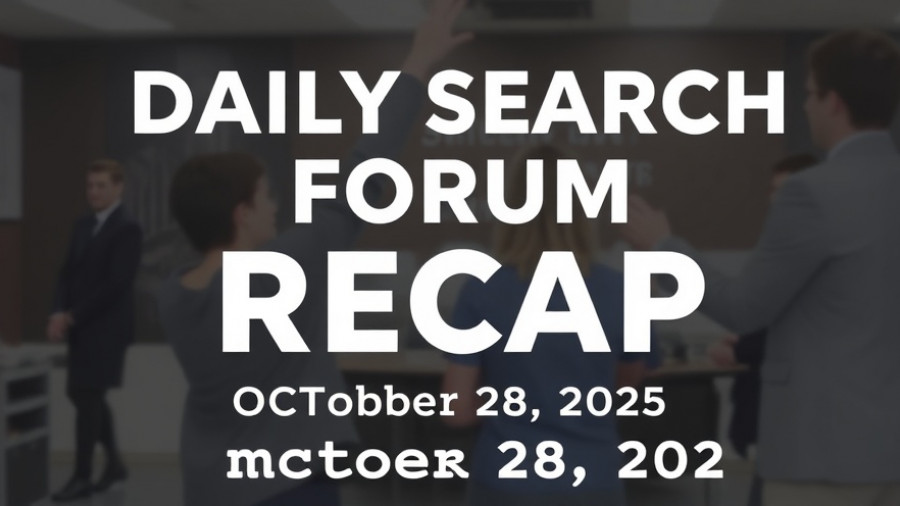
Innovative Tools Transforming SEO: The Significance of Query Groups
As digital marketing strategies continue to evolve in an increasingly competitive landscape, Google has introduced a game-changing feature known as query groups in its Search Console Insights. This new AI-powered tool enables users to cluster similar search queries, simplifying the process of understanding audience intent and behavior—an essential insight for small business owners and marketers alike.
Understanding the Value of Query Groups in SEO
Previously, SEO professionals faced the daunting task of sifting through numerous variations of similar queries, often resulting in data fatigue. Imagine a wall of search terms that read something like “best guacamole recipe,” “how to make guacamole,” and “easy guacamole dip.” Such data clutter can confuse even experienced marketers. With the implementation of query groups, Google allows users to view aggregated insights that reveal broader search patterns, helping them tailor content more effectively to meet user needs.
The Nuts and Bolts: How Query Groups Work
So, how does this new feature work? Query groups utilize sophisticated AI algorithms that identify commonalities among search phrases and group them into digestible clusters. Within the Search Console Insights, users can now see categories like Top groups, which highlights the queries generating the most clicks, and Trending up—which showcases rising search interests. This structure not only streamlines reporting but also reflects real-world user behavior more accurately than ever before.
Enhancing Marketing Strategies: Implications for Small Businesses
This advancement brings tangible benefits. For small business owners, understanding these clusters means identifying what their audience genuinely relates to. For instance, if a query group highlights increasing interest in “budget-friendly travel tips,” that signals an opportunity for brands in the travel sector to create relevant content or products focusing on affordability. Recognizing these patterns can dramatically improve engagement, drive more traffic, and sharpen competitive edges in specific niches.
Building on Feedback: Future Iterations
Google's commitment to improving the user experience with query groups does not stop at rollout. They actively seek feedback from content creators and marketers to refine this feature further. By sharing insights on what works and what could be enhanced, users play a vital role in shaping the tool that’s meant to make data interpretation easier for all. Instead of lingering on simplistic numerical data, the goal is to create a richer narrative around search intent.
Additional Resources for Marketers
Besides fostering better understanding through query groups, marketers can maximize their impact by leveraging additional resources. Using detailed reporting structures, creating visually compelling presentations that highlight aggregated insights, and focusing on the content gaps exposed by these groups can significantly enhance client relationships for agencies. With streamlined reporting, communicating complex strategies to clients becomes less cumbersome and more impactful.
Adapting to Change: Embracing New SEO Trends
As the marketing landscape continues to shift, it’s crucial to adapt to new developments such as query groups and understand their implications for SEO effectiveness. Combining personal experiences, insights from industry leaders, and data-driven strategies can create a winning formula for businesses. Whether you’re a solo entrepreneur trying to figure out your first digital marketing approach or part of a larger agency, keeping pace with tools like this can significantly boost your online marketing efficiency.
Conclusion: The Future of SEO
In the world of SEO, the introduction of tools like query groups exemplifies the growing role AI plays in shaping strategies for marketing professionals. By adopting these changes and collaborating with Google to enhance features, small business owners and agencies can leverage new opportunities to thrive in a crowded online marketplace. Moving forward, make it a priority to embrace these tools and insights to strengthen your online presence.
 Add Row
Add Row  Add
Add 




Write A Comment